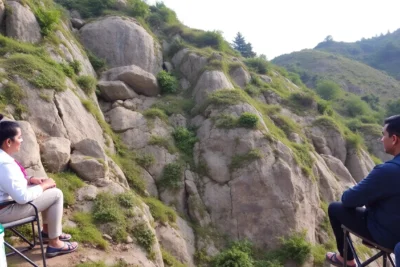
- What Makes the Sagrada Familia a UNESCO World Heritage Site?
- Exploring the Architectural Innovations of Gaudí at Sagrada Familia
- A Visitor's Guide to the Sagrada Familia: Tips and Tricks
- The Symbolism Behind Sagrada Familia's Intricate Facades
- Sagrada Familia: A Journey Through Gaudí's Vision and Legacy
- Understanding the Construction Timeline of Sagrada Familia
The Sagrada Familia is not just a basilica; it is a symbol of Barcelona's artistic heritage and a testament to the genius of architect Antoni Gaudí. This iconic structure combines Gothic and Art Nouveau styles, making it one of the most unique buildings in the world and a must-see for visitors to the city.
In this article, we will explore the intricate details, historical significance, and ongoing construction of this architectural marvel. Join us as we delve into What is Sagrada Familia in Barcelona: A Guide to Gaudí's Masterpiece and discover why this stunning monument continues to captivate millions of tourists each year.
What Makes the Sagrada Familia a UNESCO World Heritage Site?
The Sagrada Familia was designated a UNESCO World Heritage Site in 2005, primarily due to its unique architectural style and innovative construction techniques. Antoni Gaudí's vision integrates nature, religion, and art in a manner that is unprecedented in the world of architecture. This recognition highlights the basilica's significance not just as a religious structure but as a cultural and artistic landmark.
One of the key factors that contribute to its UNESCO status is the exceptional creativity applied in the design of the Sagrada Familia. Gaudí's use of geometric shapes, natural forms, and intricate facades reflects a deep understanding of both structural integrity and beauty. The basilica features:
- Organic shapes inspired by nature
- Rich symbolism embedded in its sculptures and stained glass
- Innovative use of light and space
Additionally, the ongoing construction of the Sagrada Familia epitomizes the enduring legacy of Gaudí's work. Despite his passing in 1926, the project continues to evolve, utilizing modern technologies while staying true to his original vision. This fusion of tradition and innovation is a hallmark of UNESCO’s criteria for cultural heritage sites.
Finally, the Sagrada Familia represents a synthesis of various artistic styles, including Neo-Gothic and Art Nouveau elements. This eclectic blend not only makes it stand out among other architectural wonders but also offers a comprehensive narrative of the evolution of architecture in the 19th and 20th centuries. As a UNESCO World Heritage Site, it serves as a vital link to understanding Barcelona's rich cultural history.
Exploring the Architectural Innovations of Gaudí at Sagrada Familia
Exploring the architectural innovations of Antoni Gaudí at the Sagrada Familia reveals a groundbreaking approach to design that combines art with engineering. One of his most notable innovations is the use of hyperboloid structures, which provide both aesthetic appeal and structural stability. This technique allows the basilica to rise dramatically towards the sky while ensuring that the weight is distributed evenly throughout the building.
Gaudí also incorporated catenary arches into his design, which are formed by hanging a chain and observing the resulting curve. This method not only enhances the visual beauty of the structure but also serves a practical purpose by creating a stable framework that can withstand various stresses. The interplay of light and shadow created by these arches adds to the spiritual ambiance of the interior.
The use of natural materials is another hallmark of Gaudí's work at the Sagrada Familia. He favored stone sourced from local quarries, which not only harmonizes the basilica with its surroundings but also allows for intricate carvings that reflect the flora and fauna of Catalonia. The façade showcases various elements, including:
- Detailed sculptures depicting Biblical stories
- Colorful stained glass that transforms light into a rainbow of hues
- Textured surfaces that mimic the appearance of tree bark and other natural forms
In addition to these innovations, Gaudí’s design philosophy emphasizes dynamic forms that mimic organic growth. This approach is evident in the basilica's towers, which reach varying heights and are adorned with unique crowns, each representing different saints. This organic approach not only beautifies the building but also reinforces its connection to nature, a key aspect of Gaudí's vision for the Sagrada Familia.
A Visitor's Guide to the Sagrada Familia: Tips and Tricks
When visiting the Sagrada Familia, planning ahead can enhance your experience. Consider booking your tickets online to avoid long queues, especially during peak tourist seasons. This will allow you to spend more time marveling at Gaudí's architectural genius rather than waiting in line.
To make the most of your visit, you may want to take advantage of the audio guide available on-site. This guide provides insightful commentary on the basilica's history, symbolism, and architectural details, enriching your understanding of this masterpiece. Additionally, here are some tips to enhance your visit:
- Visit during the early morning or late afternoon for fewer crowds.
- Check the schedule for guided tours for a more in-depth exploration.
- Don't forget to explore the surrounding area, including the park and nearby attractions.
Photography enthusiasts should also be mindful of the best spots to capture the Sagrada Familia's stunning facades. The Nativity Facade is particularly photogenic in the morning light, while the Passion Facade offers dramatic shadows in the afternoon. To help with your planning, here’s a simple comparison of the two facades:
| Facade | Best Time to Visit | Notable Features |
|---|---|---|
| Nativity Facade | Morning | Intricate sculptures and vibrant colors |
| Passion Facade | Afternoon | Bold, angular designs and emotional expressions |
Lastly, remember to take a moment to appreciate the interior of the Sagrada Familia. The play of light through the stained glass creates a mesmerizing atmosphere, transforming as the day progresses. Embrace the tranquility and spiritual ambiance, as it reflects Gaudí's intention of harmonizing nature with architecture.
The Symbolism Behind Sagrada Familia's Intricate Facades
The Sagrada Familia's facades are rich in symbolism, each telling a unique story that reflects Gaudí's spiritual vision. The Nativity Facade celebrates the birth of Jesus and showcases an abundance of natural forms, symbolizing life and creation. Intricate sculptures of animals and plants intertwine with biblical figures, inviting visitors to appreciate the harmony of nature and divinity.
In contrast, the Passion Facade presents a stark visual language that emphasizes the sacrifice of Christ. Its angular and dramatic sculptures evoke a sense of suffering and redemption, embodied in the figures of the crucifixion. The facade's raw and unfinished appearance serves as a powerful reminder of the enduring impact of suffering, aligning with Gaudí's intention to highlight the themes of sacrifice and salvation.
Moreover, the Glory Facade, still under construction, aims to depict the resurrection and the glory of Christ. This facade will focus on themes of divine light and eternal life, symbolizing hope and the promise of redemption. As visitors await its completion, they can reflect on how each facade collectively narrates the story of Christianity and the journey of faith.
The use of colorful stained glass and intricate carvings throughout the Sagrada Familia further enhances its symbolic narrative. Each element complements the overall themes, inviting contemplation and introspection. Gaudí's approach integrates not only architectural beauty but also profound spiritual messages that resonate with visitors from around the world.
Sagrada Familia: A Journey Through Gaudí's Vision and Legacy
The Sagrada Familia stands as a testament to Antoni Gaudí's visionary genius, transcending traditional architectural boundaries. His incorporation of nature into the design reflects a deep understanding of the environment, where the basilica's columns resemble trees branching out, creating a forest-like interior. This connection to nature is not merely aesthetic but embodies Gaudí's belief in the spiritual harmony between humanity and the natural world.
Each facet of the Sagrada Familia showcases Gaudí's innovative use of materials and forms, which are infused with rich symbolism. The play of light throughout the structure, particularly through the vividly colored stained glass, transforms the interior into a dynamic tapestry of colors that shift with the time of day. This use of light is central to Gaudí's intention of creating a divine atmosphere, inviting visitors to reflect on their spiritual journey.
Moreover, Gaudí's vision extends beyond the architectural marvel itself; it is a cultural narrative that connects generations. The ongoing construction, which preserves the original designs and principles, illustrates the enduring legacy of his work. As each new stone is laid, it reinforces the idea that the Sagrada Familia is not only a monument but a living project, continuously evolving while retaining its core message of faith and creativity.
In essence, visiting the Sagrada Familia is not just about witnessing a magnificent structure; it is a journey through time. It allows visitors to explore the intricate fusion of art, religion, and nature, all of which are meticulously woven into Gaudí's masterpiece. As the basilica approaches its anticipated completion, it stands as a beacon of hope, inspiration, and a profound reminder of the power of human creativity in shaping cultural heritage.
Understanding the Construction Timeline of Sagrada Familia
Understanding the construction timeline of the Sagrada Familia reveals a fascinating journey that began in 1882 and continues to this day. Initially designed by Francisco de Paula del Villar, the project took a significant turn when Antoni Gaudí took over in 1883. His innovative vision redefined the basilica’s purpose and design, integrating intricate details and natural forms that paid homage to the surrounding landscape. The construction process has been slow and meticulous, influenced by both funding and historical events.
The timeline can be categorized into significant phases, each marked by unique developments and challenges:
- 1882-1926: Gaudí's initial designs and construction efforts, steeped in his distinctive style.
- 1926-1936: Post-Gaudí era, where construction continued based on his models.
- 1936-1950: Interruption due to the Spanish Civil War, leading to the destruction of valuable plans and models.
- 1950-present: Resumption of construction using modern techniques while striving to remain faithful to Gaudí’s vision.
The basilica's anticipated completion date is projected for 2026, marking the centenary of Gaudí’s death. This timeline reflects not just the architectural ambitions of the Sagrada Familia but also the enduring dedication to preserving Gaudí's original intentions. Each completed section showcases a blend of traditional craftsmanship and modern technology, illustrating how cultural heritage continues to evolve in response to contemporary needs.
As the construction progresses, visitors can witness the ongoing transformation of the Sagrada Familia. The use of advanced techniques, such as computer-aided design, aids in recreating Gaudí’s intricate details with remarkable accuracy. This blend of innovation and tradition ensures that the basilica will stand as a lasting symbol of Barcelona's architectural legacy for generations to come.
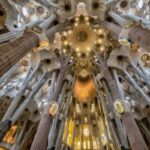 Is Sagrada Familia Closed? All You Need to Know
Is Sagrada Familia Closed? All You Need to Know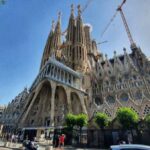 The Fascinating Story Behind Sagrada Familia Barcelona
The Fascinating Story Behind Sagrada Familia BarcelonaIf you want to know other articles similar to What is Sagrada Familia in Barcelona: A Guide to Gaudí's Masterpiece you can visit the category Blog.
Deja una respuesta

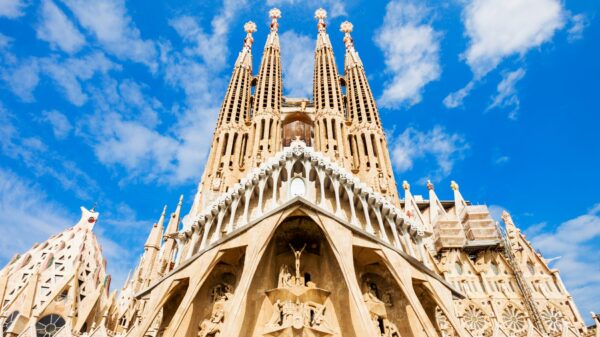
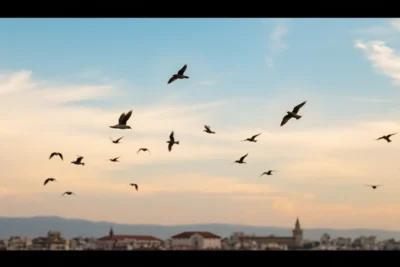



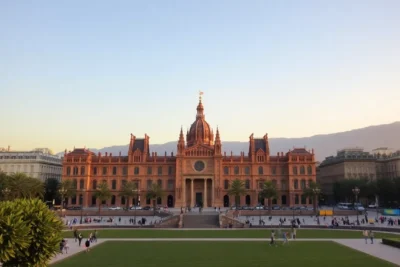

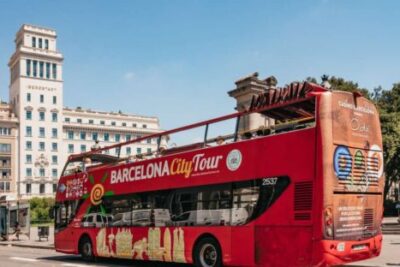
Read more!